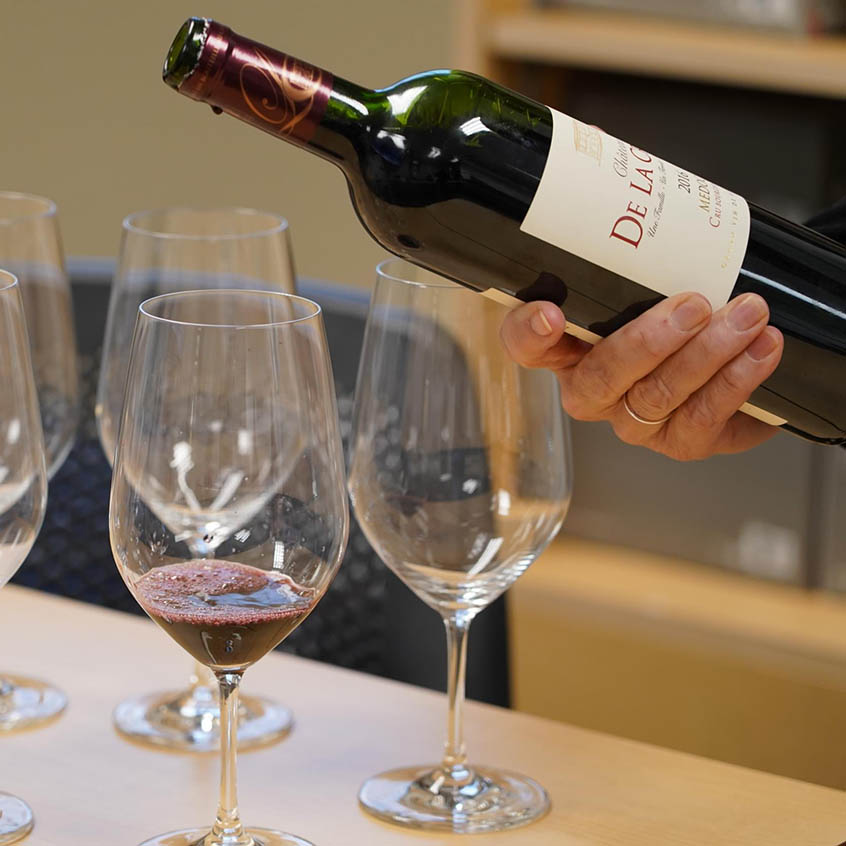
Become a cheese master by learning from one! Whether you are a cheese professional or an avid enthusiast, this course will expand your knowledge, enhance your palate, and sharpen your senses on every level when dealing with cheese. Max McCalman, acknowledged as one of the cheese world's living legends due to his expertise, insight, and passion for cheese, will teach this six-session, 12-hour class. Students will sample more than 40 cheeses, and all sessions will include wine pairings. Everyone will receive a diploma acknowledging their successful completion of the class. Session 1: The Basics of Cheese. The various cheese styles (e.g. washed rind, bloomy rind, tomme) and milk types (e.g., goat, sheep, cow); the influences of terroir, animal breeds, and seasons; and how cheeses are classified and categorized. The class will include a brief history of cheese, and introduce cheese nomenclature. Session 2: The Basics of Cheesemaking. Composition of dairy milks and the function of those components; how cultures and rennet fit into the process; and an introduction to cheese ripening (affinage). Students will learn how to make an initial analysis and evaluation of a cheese. Session 3: Cheese Retailing. Students will learn how to properly cut, package, store, and display cheese, and what can go wrong when those steps are done incorrectly; the business and economic sides of cheese in the retail and restaurant environments; what is an A.O.C., P.D.O., or A.O.P. cheese? Session 4: Nutrition. Is cheese good for you? This session will take an in-depth look at cheese nutrition, including how cheese compares with other foods; how milk type contributes to the nutritional content of each cheese; allergies attributed to cheese; the controversy over its fat and salt content; and the view that cheese is "the perfect food." Session 5: The Raw Milk Debate. Should all cheese be pasteurized? Conversely, should all cheese be raw? Is there an answer somewhere in between? Students will hear all sides of the debate, and learn current regulations for imported and domestic cheeses. By the end of the session, students will better know how to tell if a cheese is raw or pasteurized through taste and smell. Session 6: Cheese Tasting and Pairings. Discussions include cooking with cheese; likely accompaniments; and entertaining with cheese. Students will receive suggested readings and resources to further enhance their mastery of cheese.

You will work in teams to execute the class menu. At the end of class, participants gather to enjoy the food they have prepared. Wine is served with meals in most classes. All class menus are subject to change. While a snack platter is offered in both morning and evening classes, you may want to consider a light snack before joining us for class. Students are encouraged to bring a light lunch or dinner to all pastry classes.

You will work in teams to execute the class menu. At the end of class, participants gather to enjoy the food they have prepared. Wine is served with meals in most classes. All class menus are subject to change. While a snack platter is offered in both morning and evening classes, you may want to consider a light snack before joining us for class. Students are encouraged to bring a light lunch or dinner to all pastry classes.
Provence is a land of sun-drenched beaches, olive groves, lavender fields and, of course, great wines and food. Known primarily for its beautiful multihued rosés, the appellation additionally presents a varied landscape of delicious wine styles of every type --- traditional sparkling, floral-scented whites and berry-rich reds --- making this region a perfect wine stop! Having once served as maître d'hôtel of a Provençal restaurant, Richard Vayda, ICE's resident sommelier, will be your ideal guide through an evening exploring some of the unique gems of this area. Regional cheeses and other nibbles will accompany the tasting, which will include at least eight wine selections.
In this course, you'll learn the techniques to prepare four simple and delicious seafood dishes. The chef instructor will share tips and tricks for selecting the best seafood, and you'll sit down to your completed menu of: refreshing shrimp salad with herbal vinaigrette; Thai curry mussels; fish tacos; steamed fish en papillote with vegetable ribbons, citrus and herbs.
Let's eat like we're in Italy, from the apps all the way through to a rich dessert! These dishes put you back in that Mediterranean mindset...even if you've never been there. Make and sit down to this warm, comforting Italian banquet of: fried zucchini with Parmesan; veal saltimbocca alla romana; spaghetti carbonara; cavolfiore alla napoletana (cauliflower with raisins and pine nuts).
From bibimbap to bulgogi, the signature dishes of Korea have seduced America with intoxicating flavors. Sweet-spicy flavor combos are popular, as are the vegetables, meat and seafood that are featured in main dishes as well as in banchan, the Korean assortment of side dishes that appears in most traditional meals. You will learn to make dakgangjeong (hot chicken wings); bulgogi (grilled seasoned sliced beef) with assorted banchan; and bibimbap (seasoned vegetable rice bowl).
Ranked as America’s Best Culinary School (USAToday 2019), our roster of Chef-Instructors have run top kitchens around the globe.
| (Separate multiple addresses with commas like: john@aol.com, jane@aol.com) | |